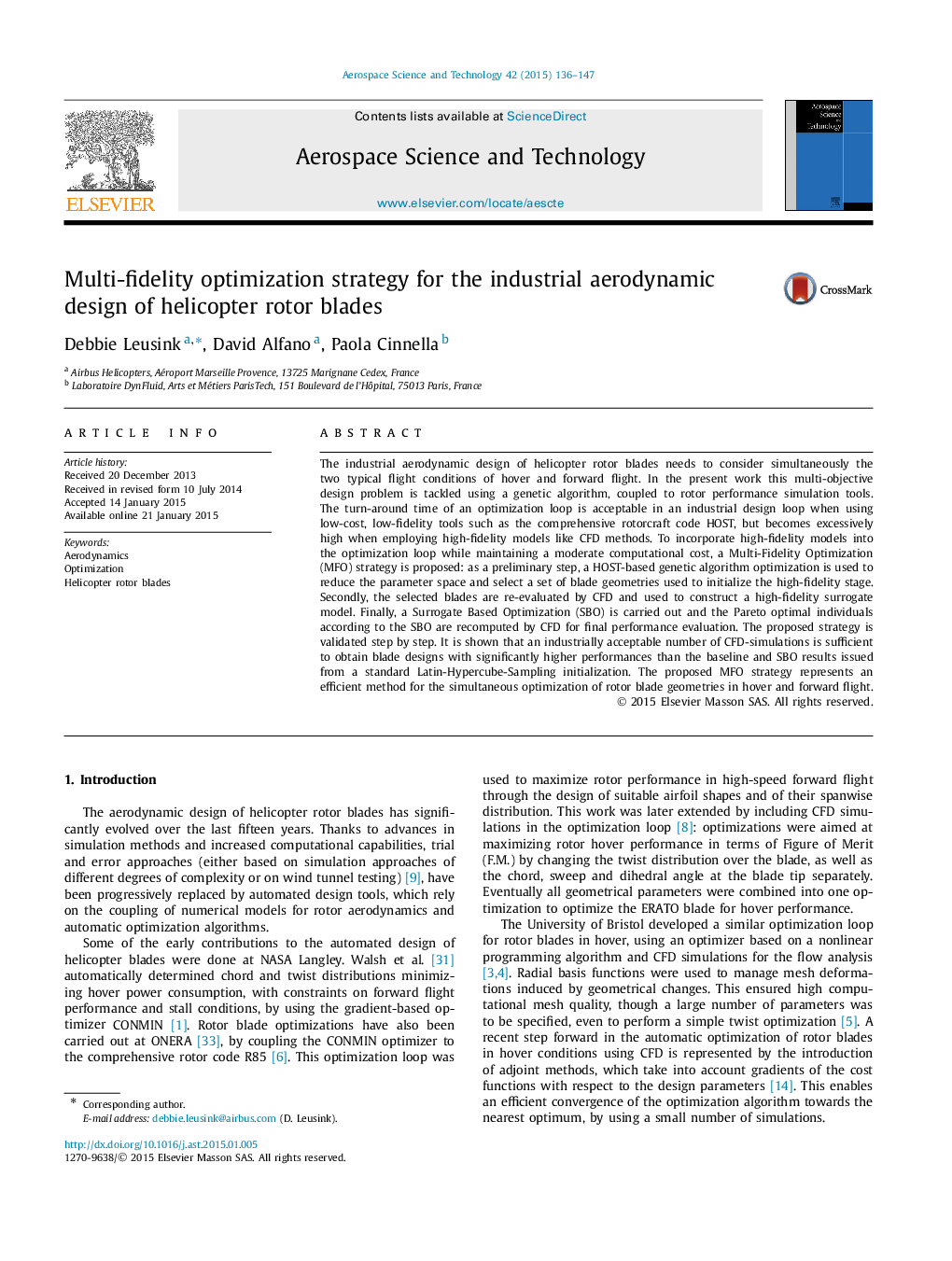| Article ID | Journal | Published Year | Pages | File Type |
|---|---|---|---|---|
| 1717913 | Aerospace Science and Technology | 2015 | 12 Pages |
The industrial aerodynamic design of helicopter rotor blades needs to consider simultaneously the two typical flight conditions of hover and forward flight. In the present work this multi-objective design problem is tackled using a genetic algorithm, coupled to rotor performance simulation tools. The turn-around time of an optimization loop is acceptable in an industrial design loop when using low-cost, low-fidelity tools such as the comprehensive rotorcraft code HOST, but becomes excessively high when employing high-fidelity models like CFD methods. To incorporate high-fidelity models into the optimization loop while maintaining a moderate computational cost, a Multi-Fidelity Optimization (MFO) strategy is proposed: as a preliminary step, a HOST-based genetic algorithm optimization is used to reduce the parameter space and select a set of blade geometries used to initialize the high-fidelity stage. Secondly, the selected blades are re-evaluated by CFD and used to construct a high-fidelity surrogate model. Finally, a Surrogate Based Optimization (SBO) is carried out and the Pareto optimal individuals according to the SBO are recomputed by CFD for final performance evaluation. The proposed strategy is validated step by step. It is shown that an industrially acceptable number of CFD-simulations is sufficient to obtain blade designs with significantly higher performances than the baseline and SBO results issued from a standard Latin-Hypercube-Sampling initialization. The proposed MFO strategy represents an efficient method for the simultaneous optimization of rotor blade geometries in hover and forward flight.
